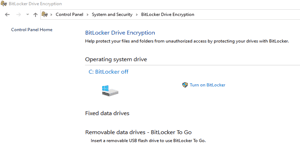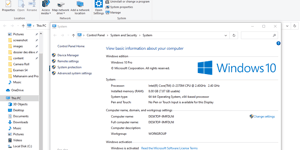ChatGPT is a natural language processing model based on the GPT-3.5 architecture, developed by OpenAI. GPT stands for “Generative Pre-trained Transformer,” which means it is capable of generating text consistently and contextually appropriately. ChatGPT is trained on extensive datasets to understand and respond to users’ questions.
The GPT-3.5 model, upon which ChatGPT is built, is one of the most advanced versions in the series of GPT models created by OpenAI. It can comprehend complex questions, generate detailed responses, and engage in conversations on various topics.
Although it may appear intelligent, it’s essential to note that ChatGPT lacks consciousness, emotions, or genuine understanding of the world. It operates by analyzing language patterns based on the data it was trained on.
In this tutorial, I will teach you what is ChatGPT, what it can do, how to acces it and use it.
Disclaimer: I am not responsible for any damage that may occur.
When did work on ChatGPT begin?
OpenAI started working on the technology that led to ChatGPT after the development of the initial models in the GPT (Generative Pre-trained Transformer) series. The GPT series began with GPT, followed by GPT-2, then GPT-3, and eventually GPT-3.5, upon which ChatGPT is based.
GPT-3.5, the version used for ChatGPT, was released in June 2020. Since then, OpenAI has continued to improve and iterate on these models to make them more effective, accurate, and useful for a variety of applications, including chatbots and virtual assistance like ChatGPT.
It’s important to note that ongoing progress in this field means that new developments and versions of these models may have been released since my last update in January 2022. For the latest information on OpenAI’s work, I recommend checking their official website or public announcements.
What can ChatGPT do?
ChatGPT is capable of performing a variety of tasks related to natural language processing. Here are some of its abilities:
- Answering Questions: ChatGPT can respond to factual questions using the knowledge it has acquired from the data it was trained on. This can include questions about general facts, definitions, historical events, and much more.
- Help and Problem-solving: It can provide assistance in solving problems or dilemmas by offering suggestions, advice, or guidance.
- Writing Assistance: ChatGPT can aid in content writing by suggesting ideas, correcting grammar, and improving sentence structure.
- Providing Explanations: It can explain complex concepts or technical subjects in a more accessible manner.
- Engaging in Conversations: ChatGPT can engage in conversations on various topics, although it’s important to note that it lacks consciousness or emotions. It can respond contextually based on previous messages in the conversation.
- Multiple Languages: ChatGPT can understand and generate text in multiple languages, although its performance may vary based on the training it has received in each language.
- Creativity: While not creative in the human sense, ChatGPT can generate creative texts such as poems, short stories, or even dialogue scripts based on given instructions.
It’s important to note that ChatGPT is a tool based on language models and does not possess real-world understanding or intelligence beyond processing linguistic patterns it was trained on.
How to access ChatGPT?
You can access ChatGPT by visiting OpenAI’s website, which provides a user-friendly interface to interact with the model. OpenAI also offers APIs (Application Programming Interfaces) that allow developers to integrate ChatGPT into their own applications, websites, or services.
Access to ChatGPT might be free for limited usage, but OpenAI also offers paid subscription plans that provide additional features and priority access to new functionalities. Details about pricing plans and available features are typically provided on OpenAI’s website.
It’s important to review OpenAI’s terms of use and pricing policies to fully understand the limitations and costs associated with using ChatGPT. This information might evolve over time, so I recommend checking OpenAI’s website for the most recent details on how to access ChatGPT.
How to use ChatGPT?
To use ChatGPT, you can access the OpenAI platform, which provides a user-friendly interface to interact with the model. Follow these steps to use ChatGPT:
- Access OpenAI’s Website: Visit OpenAI’s website (https://www.openai.com/ ) to find information on accessing ChatGPT. Follow the instructions to create an account if necessary.
- Choose a Plan: OpenAI offers different subscription plans, including free options with usage limitations. Select the plan that suits your needs. Paid plans typically offer benefits such as higher usage quotas and priority access to new features.
- Get API Access (If Applicable): If you’re a developer and want to integrate ChatGPT into your own applications, you can obtain access to OpenAI’s API. The API allows for more advanced and customized integration with the model.
- Use the Online Interface: If you prefer an online interface over the API, log in to your OpenAI account and use the ChatGPT interface available on the website. You can ask questions, engage in conversations, or seek assistance on various topics.
- Follow the Guidelines: When using ChatGPT, follow the guidelines and responsible usage policies. Avoid asking questions or requesting responses that might violate OpenAI’s rules.
- Explore the Features: Experiment with ChatGPT by asking questions, seeking advice, or engaging in conversations on different subjects. Feel free to explore the model’s various capabilities.
Continue to follow this website for all the latest updates regarding this topic.
Share on:





